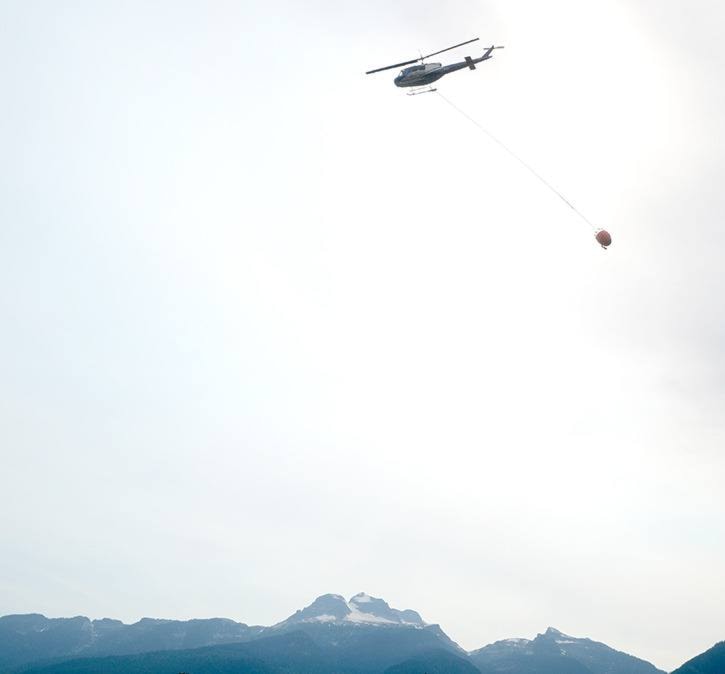The wildfire situation in the Revelstoke area abated significantly over the last week, with fire crews extinguishing numerous spot fires.
“Right now in the Columbia Zone we have a total of 12 incidents,” said Jordan Turner, a fire information officer with the Southeast Fire Centre. Eleven of those 12 were caused by lightning and the other by humans.
The number is less than half the 25 that were reported last week, when a series of lightning storms hit the region, providing some spectacular lightning displays to Revelstokians. Of those 25 fires, most were small spot fires.
“That was the high point of the season,” said Turner. “We had a whole lot of lightning storms and we had extra crews to come in to handle these storms.”
Over the week, initial attack crews worked on extinguishing most of the small fires. they were assisted by heavy rains that came into the area over the weekend.
“We haven’t been gaining many new fires but we’ve had all these crews working on these new fires and putting them out every day,” said Turner.
Four of the fires that are still burning near Revelstoke are larger than five hectares. The biggest is a 22.6 hectare fire near Jumping Creek, east of Revelstoke. A 12.5-hectare fire is burning near the Wood Arm of Kinbasket Lake, a seven-hectare fire is burning near the Illecillewaet River, and another seven-hectare fire is burning near Waitabit Creek near Golden. All of these fires were contained over the weekend.
“There wasn’t a lot of activity or wind over the weekend so the crews were able to clean up a few fires and keep others contained,” said Turner.
There has been 260 fires in the Southeast Fire Centre so far this year. 221 were caused by lightning and 39 by people. The largest active fire is a 170-hectare blaze burning near Duncan Lake.
The danger has dropped to moderate throughout most of the southeast, with pockets of low and high in areas. The number of active fires is expected to continue to drop this week; no more storms are expected until at least the weekend, said Turner.
